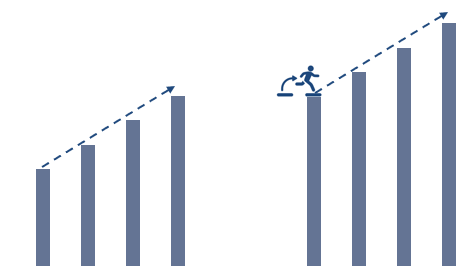A Risk Analyst in the fintech industry plays a important role in identifying, assessing, and managing potential risks that could affect the financial services or technology platforms within the sector.
Fintech, which blends finance with technology, creates a unique set of challenges in terms of cybersecurity, regulatory compliance, financial stability, and market volatility.
Here’s a breakdown of the key responsibilities and roles a Risk Analyst would typically have in this space:
1. Risk Identification
- Market Risk: Understanding how external market factors such as interest rates, exchange rates, and economic shifts affect the financial products or services offered by the fintech company.
- Credit Risk: Analyzing the creditworthiness of borrowers, especially for fintech firms offering lending or credit products. The analyst may evaluate customers’ financial behavior using alternative data (e.g., transaction history, social data, etc.).
- Operational Risk: Identifying internal risks like system outages, human errors, or fraud that could affect day-to-day operations.
- Cybersecurity Risk: Given the digital nature of fintech, managing risks related to data breaches, hacking, and other cybersecurity threats is critical.
- Regulatory & Compliance Risk: Understanding and mitigating risks related to non-compliance with financial regulations, data protection laws (e.g., GDPR), and other legal frameworks.
2. Risk Assessment
- Quantitative Risk Modeling: Building and using statistical models to predict and quantify risks (e.g., value-at-risk (VaR), stress testing, scenario analysis).
- Stress Testing & Scenario Analysis: Analyzing how different stress scenarios (like a financial crisis or a significant drop in asset values) could impact the business and its financial stability.
- Risk Metrics and Reporting: Designing and maintaining key risk indicators (KRIs), risk dashboards, and reports to provide visibility into the company’s risk exposure to senior management or regulators.
3. Risk Mitigation & Control
- Developing Risk Mitigation Strategies: Proposing methods to minimize or avoid risks. For example, recommending hedging strategies for market risks or implementing tighter fraud detection systems.
- Internal Controls: Working with the internal audit and compliance teams to ensure that adequate internal controls are in place to prevent fraud, errors, or regulatory violations.
- Third-party Risk Management: Evaluating the risks associated with third-party service providers, such as payment processors or cloud hosting providers, ensuring they adhere to proper security and compliance standards.
4. Regulatory Compliance and Reporting
- Monitoring Regulatory Changes: Staying updated on the evolving regulatory landscape (e.g., PSD2 in Europe, SEC regulations, etc.) to ensure that the fintech company remains compliant with laws affecting its operations.
- Reporting to Regulators: Risk Analysts in fintech often prepare reports or risk assessments for regulatory bodies, ensuring transparency and demonstrating compliance with financial regulations.
5. Technology and Data Risk Management
- Data Privacy and Security: Given the amount of sensitive personal and financial data in fintech, ensuring proper data governance and security practices are in place is essential. This includes protecting against data breaches and ensuring the company complies with privacy laws.
- Systemic Risk Management: Addressing the potential risks arising from technology failures, such as service downtime, API vulnerabilities, or system hacks, which can significantly impact users and company operations.
6. Collaboration with Other Teams
- Collaboration with Product Development: Working closely with the product and engineering teams to identify and address risks associated with new features, offerings, or technologies being developed.
- Cross-Functional Coordination: Coordinating with departments like compliance, operations, and finance to ensure that risk management is integrated across all aspects of the business.
7. Tools and Technology Used
- Risk Management Software: Many risk analysts in fintech use specialized tools like SAS, RiskWatch, or MATLAB to conduct risk assessments and modeling.
- Data Analytics and AI: Leveraging big data and AI tools to detect patterns, predict risk events, and automate some aspects of risk assessment, especially for credit or fraud-related risks.
8. Crisis Management and Incident Response
- In case of a security breach or a major financial setback, the Risk Analyst plays a role in the incident response team, analyzing the cause, assessing the potential financial impact, and helping to mitigate the effects of the incident.
9. Continuous Improvement
- Ongoing Risk Monitoring: Continually tracking the company’s risk exposure, using real-time data and predictive analytics to adjust risk models as necessary.
- Training and Awareness: Educating teams within the company about risk management principles, best practices, and the importance of adhering to security and compliance protocols.
Key Skills and Qualifications:
- Strong Analytical Skills: Ability to analyze large sets of financial and operational data to identify potential risks.
- Knowledge of Financial Products: Understanding of financial instruments, lending models, investment products, and the broader financial landscape.
- Regulatory Knowledge: Familiarity with regulations such as MiFID II, PSD2, or Dodd-Frank, and the ability to stay updated on changes.
- Technical Proficiency: Knowledge of risk management software and tools, data analysis techniques, and an understanding of the tech infrastructure underlying fintech solutions.
- Problem-Solving and Decision Making: The ability to propose solutions for complex risk scenarios and make decisions under uncertainty.
In summary, a Risk Analyst in fintech must have a deep understanding of both the financial and technological aspects of the business. They are responsible for safeguarding the company against a range of risks, from market fluctuations to cyber threats, while ensuring compliance with regulatory standards and maintaining business continuity. Their role is dynamic and requires a mix of analytical, technical, and communication skills to manage risk effectively in a fast-paced, constantly evolving industry.
